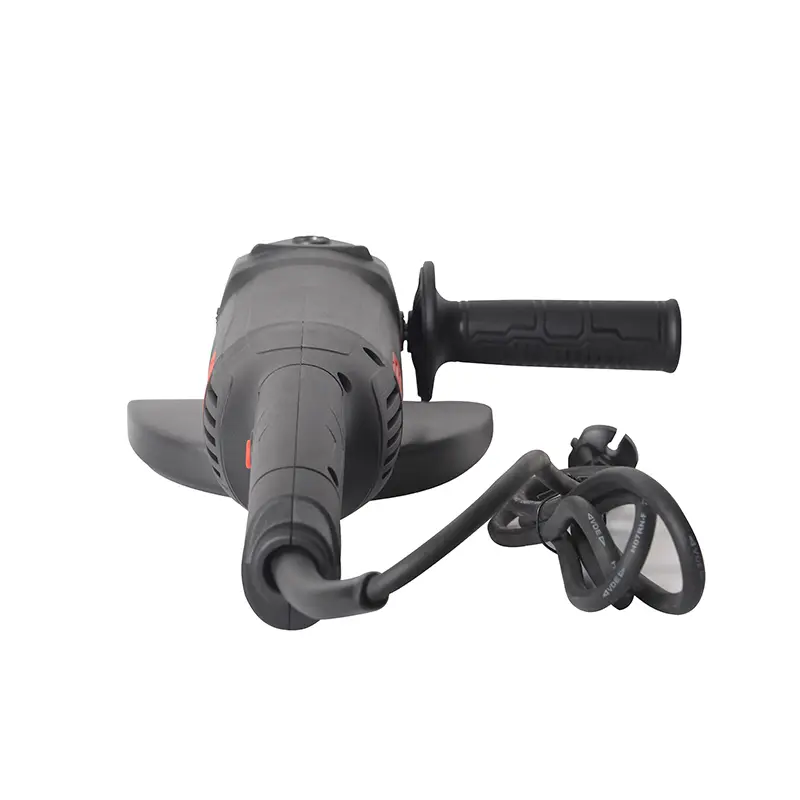At large construction sites, when operators drag polishing machines for work, they often encounter such a problem: the cables are too short, requiring frequent socket replacement, which seriously affects work efficiency. If the cables are too long, they are prone to tangling and knotting, which not only brings safety hazards but also increases unnecessary physical exertion. Choosing the appropriate cable length for a long-throw polishing machine may seem like a small detail, but in fact, it is a key link to improve operational efficiency.
Understanding Standard Configuration: Why 5-meter Cables Have Become the industry Benchmark
Most long-throw polishing machines come with a 5-meter-long cable as standard when leaving the factory, and this length is not set arbitrarily. Engineering verification shows that a 5-meter cable can strike the best balance between flexibility and safety. This length allows the operator to move freely within an area of approximately 25 square meters around a single socket, which is sufficient to cover most indoor operation scenarios. Meanwhile, this length can effectively control the voltage drop, ensuring that the motor receives a stable power input and avoiding the decline in machine performance caused by insufficient voltage.
Workshop assembly line: A smart choice for medium-distance cables
In auto repair workshops or metal processing plants, medium-length cables of 8 to 10 meters demonstrate unique advantages. This length enables the operator to move flexibly between two workstations without frequently plugging and unplugging the power supply. It is recommended to adopt the “star wiring” solution: place the power supply at the center of the area, allowing the operator to cover an operation area of approximately 80 square meters with the power supply as the center. It is worth noting that when the cable length exceeds 10 meters, it is recommended to choose a cable with a thicker diameter, such as using a 16AWG specification instead of a 18AWG one. This can effectively reduce power loss and keep the machine in the best working condition.
Large-scale space operations: Professional solutions for long cables
When it comes to large-scale space operations such as ground grinding in gymnasiums and floor treatment in warehouses, long cables of 15 to 20 meters become an inevitable choice. At this point, a scientific “regionalized operation method” needs to be adopted: divide the entire operation surface into several areas, and set up a dedicated socket in each area. After the operator finishes one area, they only need to move to the socket in the next area to continue the operation. This not only ensures the continuity of the operation but also avoids the safety hazards brought by the overly long cables.
It is particularly important to note that when using extension cords longer than 20 meters, it is essential to check the rated current carrying capacity of the equipment. It is recommended to choose industrial-grade extension cords with overload protection devices and ensure that all interfaces have good waterproof and dustproof performance.
Special environment operations: Safety always comes first
Cable management becomes particularly important when working in damp environments or at outdoor construction sites. In addition to choosing cables with waterproof functions, special attention should also be paid to the wiring method. It is recommended to use a cable protection bridge to prevent the cables from directly touching the ground or sharp objects. At the personnel passage, it is essential to use cable protection sleeves to prevent damage to the insulation layer caused by crushing. These seemingly simple protective measures can significantly extend the service life of cables and ensure the safety of operations.
Practical wiring tips: Make work easier
No matter what length of cable is chosen, the correct wiring method can make the work twice as effective with half the effort. We suggest adopting the “8-shaped” cable winding and unwinding method: After each use, store the cable in an 8-shaped winding pattern. This way, there will be no entanglement or knotting when it is used next time. During the operation, cable shoulder straps can be used to carry the extra length of cables on the shoulders. This not only keeps the operation area clean but also reduces the physical exertion of the operator.
Professional advice
When choosing the length of the cable, please consider the following factors
Average daily moving distance
Distribution of available sockets on site
Whether cross-regional operations are required
The number of devices during team work
Remember, the most expensive one is not necessarily the most suitable one, but professional cable configuration will definitely bring higher work efficiency and a more comfortable operation experience. Let’s start by choosing the right cable length to create a safer and more efficient working environment.
Post time: Oct-13-2025

